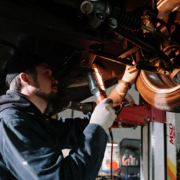When you buy a car or truck, you are buying the vehicle from a dealer, who in turn buys the vehicle from an automotive manufacturer. The process of buying vehicles from manufacturers, transporting them to dealerships and then selling them to customers is known as automotive distribution.
Automotive naked short selling is a practice that has gained popularity in recent years because it’s thought to be a quick way for dealerships to gain profit by selling more cars than they actually have on hand. Although naked short selling is legal, it isn’t ethical and can result in major problems for buyers and sellers alike.
Many automotive manufacturers sell their cars directly to dealerships without any intermediary involvement. This is known as direct delivery or factory delivery. Because there are no third parties involved in the sale, it’s easier for manufacturers to monitor and manage the transactions.
If a dealership decides to order more vehicles than they can afford or need, they may end up getting stuck with vehicles that don’t sell well or take too long to move off the lot. The dealership can avoid this problem by arranging for a third party, such as an exporter or wholesaler, to take the excess vehicles off their hands. These third-party companies will then sell the vehicles to other dealerships at a discounted rate.
Table of Contents
Techniques to Avoid Naked Short Selling
Naked short selling is a controversial practice where a trader sells shares that he does not own or has not even borrowed. If you are considering buying an automobile and want to avoid the pitfalls of naked short selling, here are a few techniques that you can use.
Step 1: Check the credit history of the person selling the car. The credit history of the individual selling the car can give you a good picture of their financial condition. If their credit history is bad, it is more likely that they will default on their promises to you.
Step 2: Get a copy of the vehicle’s title and check for liens against it. A lien means that there is still an outstanding balance against the sale of the vehicle which has to be paid off before it can be sold again. If there is an existing lien, it may not be possible to sell the car without paying off that debt first.
Step 3: Check with your state’s department of motor vehicles to see if there are any unpaid taxes on the vehicle. If there are unpaid taxes, then this could mean that the car has been repossessed by the government because of non-payment by its owner.
Conclusion
In this blog post we’ve discussed what automotive naked short selling is, why it’s important to avoid it, and how you can go about doing that. As the vehicle industry shifts towards more sales online and across borders, it will be important for car shoppers to protect themselves against automotive naked short selling and other money-stealing scams. Fortunately, there are plenty of ways to steer clear of them. If a deal sounds too good to be true, it probably is—and you should walk away.








Comments